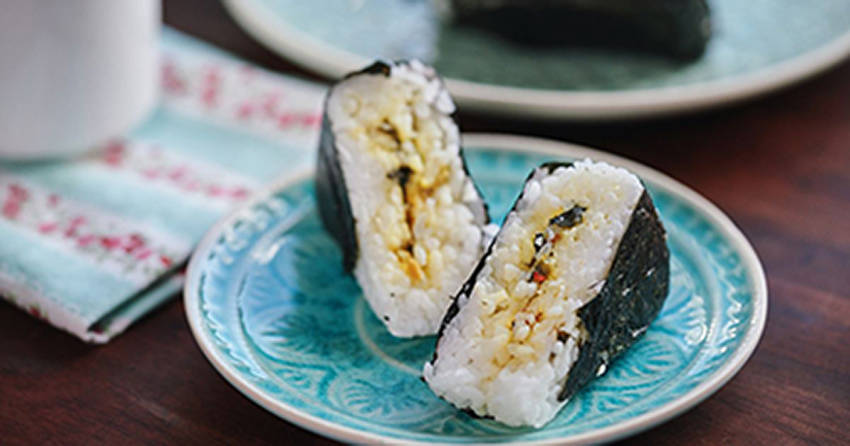日本食といえば、寿司、ラーメン、そば・うどん、とんかつ、カツ丼、お好み焼き、唐揚げなどが代表的ですが、本当の意味で手軽な食事といえばおむすび(おにぎり)・にぎり飯ではないでしょうか。
おむすび(おにぎり):
おむすびは、ごはんを手で握り、そのまま手で食べることができる食べ物です。通常は三角形の形状で、中には梅干し、鮭、漬物などの具材が入っていることがありますが、具材を使わずに塩で味付けすることもあります。海苔でくるんだり、ごま塩をまぶしたりすることも一般的です。おむすびは手軽に持ち運びができ、お弁当や軽食として親しまれています。
にぎり飯:
にぎり飯も手で握って形成される食べ物で、一般的には握り寿司の一種とみなされます。手で握ったごはんの上に新鮮な刺身、焼き魚、卵焼きなどの具材がのせられ、海苔で巻きません。具材や食材の組み合わせは様々で、季節や地域によって異なります。主に寿司店で提供され、酢を使ったすし飯ではなく、普通に炊いたご飯が使用されます。おむすび・にぎり飯の多くは外食用のテイクアウト店があり、コンビニエンスストアでも手軽に入手できます。
ひとつ注意が必要なのは、おむすび・にぎり飯の中には魚ではない肉が含まれている場合があり、これらはアメリカへの持ち込みが許可されていません。お土産として購入する際には、商品の成分表や注意書きを確認することをお勧めします。
おむすび(おにぎり):
おむすびは、ごはんを手で握り、そのまま手で食べることができる食べ物です。通常は三角形の形状で、中には梅干し、鮭、漬物などの具材が入っていることがありますが、具材を使わずに塩で味付けすることもあります。海苔でくるんだり、ごま塩をまぶしたりすることも一般的です。おむすびは手軽に持ち運びができ、お弁当や軽食として親しまれています。
にぎり飯:
にぎり飯も手で握って形成される食べ物で、一般的には握り寿司の一種とみなされます。手で握ったごはんの上に新鮮な刺身、焼き魚、卵焼きなどの具材がのせられ、海苔で巻きません。具材や食材の組み合わせは様々で、季節や地域によって異なります。主に寿司店で提供され、酢を使ったすし飯ではなく、普通に炊いたご飯が使用されます。おむすび・にぎり飯の多くは外食用のテイクアウト店があり、コンビニエンスストアでも手軽に入手できます。
ひとつ注意が必要なのは、おむすび・にぎり飯の中には魚ではない肉が含まれている場合があり、これらはアメリカへの持ち込みが許可されていません。お土産として購入する際には、商品の成分表や注意書きを確認することをお勧めします。
The Popularity of Omusubi in Japan
Typical examples of Japanese food include sushi, ramen, soba/udon, tonkatsu (pork cutlet), katsudon (a pork cutlet served on top of a bowl of rice), okonomiyaki (a Japanese savory pancake), and karaage (fried chicken). However, the quintessential easy meal is an omusubi (a rice ball) or nigiri-meshi.
Omusubi (rice ball):
Omusubi is a hand-eaten food. It typically takes a triangular shape and incorporates ingredients like pickled plums, salmon, pickles, etc. Seasoning usually includes just salt without any other additional ingredients, and people usually wrap it in seaweed or sprinkle sesame salt on it. An omusubi is easily portable and popular as a bento lunch or a light meal.
Nigiri-meshi:
Nigiri-meshi, another hand-formed food, is generally considered a type of Nigiri-zushi. Hand-rolled rice serves as the base, topped with fresh sashimi, grilled fish, egg rolls, or other ingredients, but it’s not wrapped in seaweed. The combination of ingredients varies with the season and region. Typically found in sushi restaurants, it often features cooked rice instead of vinegar’d sushi rice. Most omusubi and nigiri-meshi are available at takeout places and are easily accessible at convenience stores.
It's important to note that some omusubi and nigiri-meshi may contain non-fish meat, which foreigners can’t bring into the United States. When looking into bringing some back as souvenirs, we recommend checking the ingredient list and warning label on the product before purchasing.
sign up for the Japanese-Online Newsletter
__..-・**・-..__..-・**・-.._ あいうえお かきくけこ さしすせそ たちつてと なにぬねの はひふへほ まみむめも やいゆえよ らりるれろ わゐうゑを ん __..-・**・-..__..-・**・-.._
#JapaneseOnline #LearningJapanese #FreeJapaneseLessons #JapaneseVideoLearning #JapaneseAnime #Anime #JapaneseFood #Bloguru

